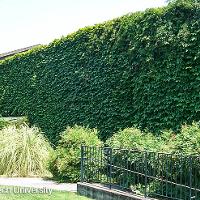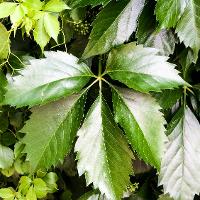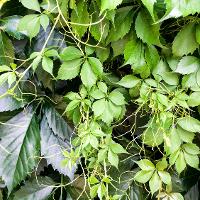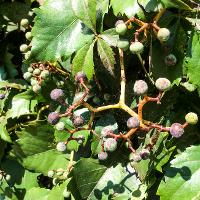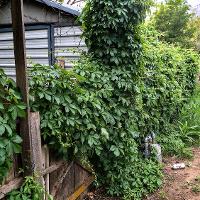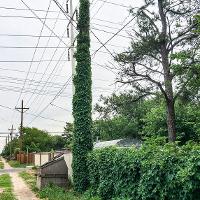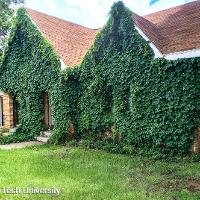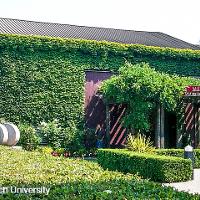Virginia Creeper, Woodbine
Parthenocissus quinquefolia
Vines
(Detailed plant information can be found at the bottom of the page.)
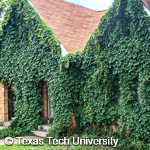
Parthenocissus quinquefolia Photo Gallery
Parthenocissus quinquefolia Plant Information
| Classification | |
|---|---|
| Scientific Name: | Parthenocissus quinquefolia |
| Common Name: | Virginia creeper woodbine |
| Family: | Vitaceae |
| Suggested Uses: | ground covers, low maintenance areas (walls, trellises, arbor, fences, etc.) |
| Characteristics | |
| Spread: | can climb up to 50 feet (often only limited by size of structure plant is growing upon) |
| Foliage: | deciduous, alternate, palmately compound with 5 to 7 leaflets each leaflet is 2 to 6 inches in length with course serrations dark, glossy green upper surface; lower surface is dull green excellent, reliable red Fall color |
| Flower: | insignificant (borne under foliage) |
| Fruit: | blue-black berry, up to ¼ inch in diameter in elongated clusters (similar to grape berries) |
| Bark: | light brown generally has prominent lenticels and concave leaf scars |
| Environment | |
| Sun: | sun or shade tolerant |
| Water: | drought-tolerant |
| Soil: | adapted to most soil types |
| USDA Zone: | zones 4 - 9 |
| Care | |
| Maintenance: | growth habit can be very aggressive and may become a weed (birds will deposit seeds everywhere) |
| Additional Notes: | heat, drought, salt, cold, and pollution tolerant often mistaken for poison oak or poison ivy |
TTU Plant Resources
-
Address
Texas Tech University, Department of Plant and Soil Science, Box 42122, Lubbock, TX 79409 -
Phone
806.742.2838 -
Email
Melanie.Jackson@ttu.edu

